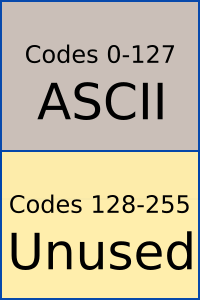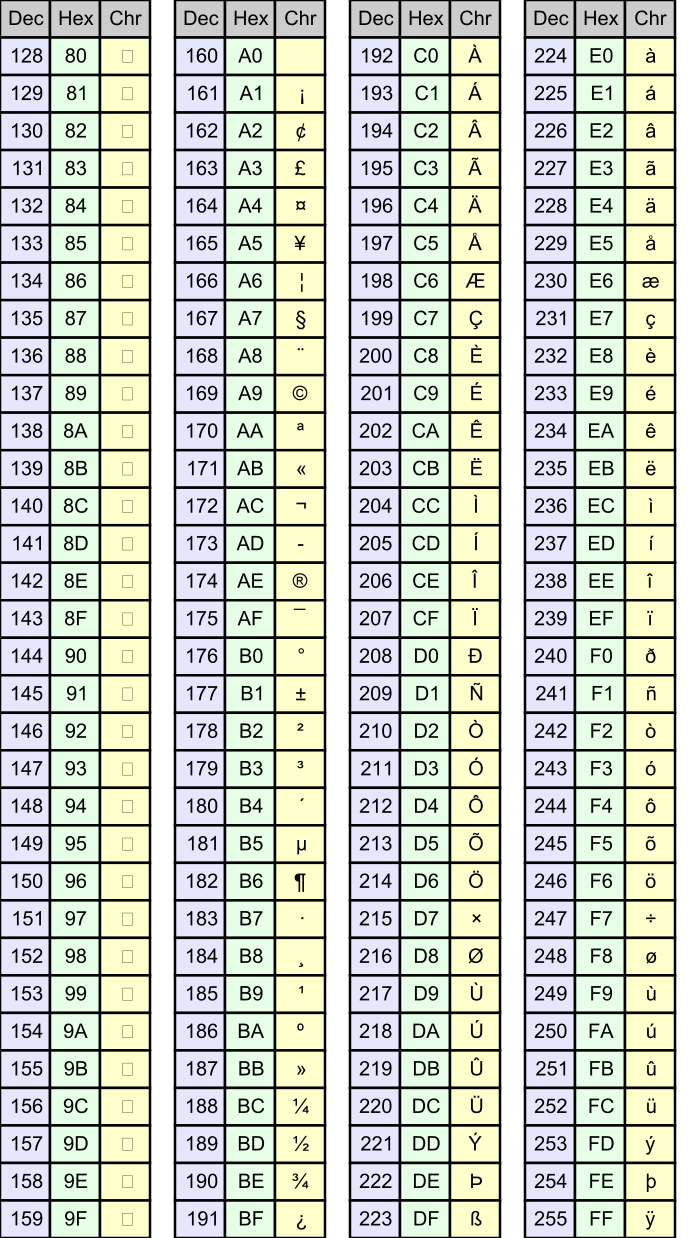Extended ASCII
Categories: data representation text character
Computers usually store ASCII text as one character per byte. A byte can store values 0 to 255, but ASCII codes only use values 0 to 127. This means that the codes 128 to 255 are unused.

Extended ASCII makes us of these unused codes to define extra characters.
Latin1 Extended ASCII
Latin1 Extended ASCII (also called ISO/IEC 8859-1) includes all the common accented characters used by European languages, as well as extra currency symbols and various other punctuation. This standard is used by Windows as the default extended character set, and is also used for the first block of Unicode characters.

Here is the table (values 128 to 159 are not used):

See also
- Binary
- Bits and bytes
- Units of storage
- Powers of two
- Representing numbers
- Binary numbers
- Hexadecimal numbers
- Adding binary numbers
- Negative binary numbers
- Bitwise logical operations
- Binary shift
- Character representation
- ASCII
- Unicode
- Digital images
- Bitmap images
- Computer colour
- Colour depth
- Vector images
- Image file formats
- Computer sound
- Recording sound
- Playing sound
- Sound file formats
Sign up to the Creative Coding Newletter
Join my newsletter to receive occasional emails when new content is added, using the form below:
Popular tags
555 timer abstract data type abstraction addition algorithm and gate array ascii ascii85 base32 base64 battery binary binary encoding binary search bit block cipher block padding byte canvas colour coming soon computer music condition cryptographic attacks cryptography decomposition decryption deduplication dictionary attack encryption file server flash memory hard drive hashing hexadecimal hmac html image insertion sort ip address key derivation lamp linear search list mac mac address mesh network message authentication code music nand gate network storage none nor gate not gate op-amp or gate pixel private key python quantisation queue raid ram relational operator resources rgb rom search sort sound synthesis ssd star network supercollider svg switch symmetric encryption truth table turtle graphics yenc